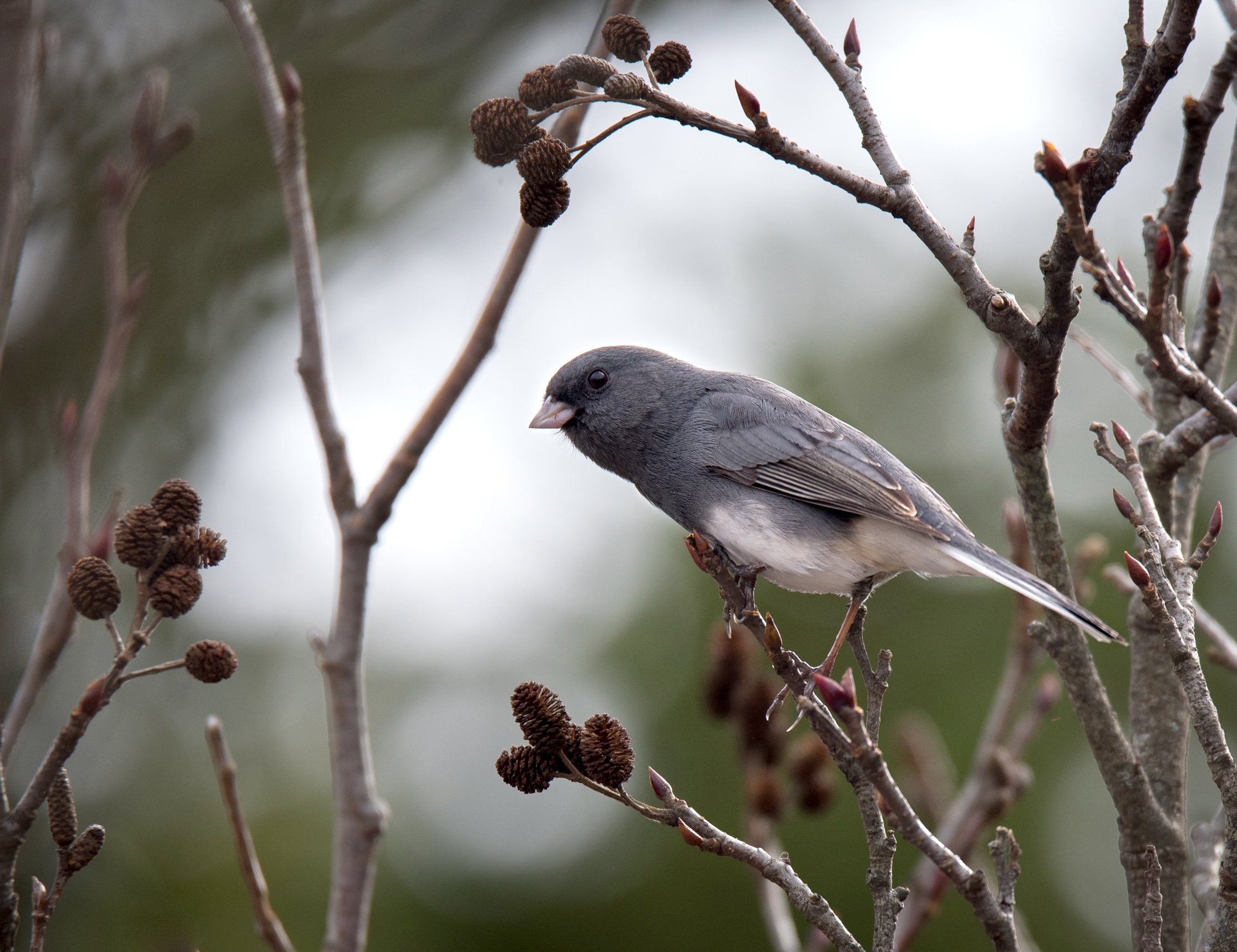Recent Feeder Activity
With the recent wintery weather a lot more birds have decided to visit feeding stations. This week my feeders were frequented by over 50 Goldfinch at a time, a dozen or so Pine Siskin, over 20 Juncos (overwhelmingly males), and lots of White-throated sparrow. A few Red-winged Blackbirds appeared as did a few Grackles, birds I rarely see in my yard.
In weather like this I always anticipate something more unusual to appear, like Orange-crowned warbler, Ruby or Golden-crowned Kinglets, and Brown creeper to name a few, typically at the suet feeders. One customer reported a lone Indigo Bunting which is very unusual to be seen in January.
And with the freezing rain being forecast, which will likely have already occurred by the time you read this, birds that don’t normally visit feeding stations may recognize the bird activity at feeders and come in for a look. My birdbaths, which have de-icer units in them, were extremely busy during the frigid temps. Birds, of course need water sources even when it’s below freezing and will bathe to keep feathers clean and at their best insulating quality for survival.
Many of you are surprised to see multiple Bluebirds visiting feeding stations and water sources. Bluebirds are, of course, here year round and will travel about in small flocks in search of food and water.
Seed Stock is Low for this Saturday
Because our seed supplier is located in Des Moines, IA sometimes weather will hold up our seed shipments as is the case this week. Freight is backed up all across the U.S. You may want to call first before you visit The Wood Thrush Shop on Saturday and Monday as we are low, or out of some choices of seed. We are very well stocked with suet and live mealworms. We anticipate receiving our load of seed early next week as temps rise to the 40’s.

















